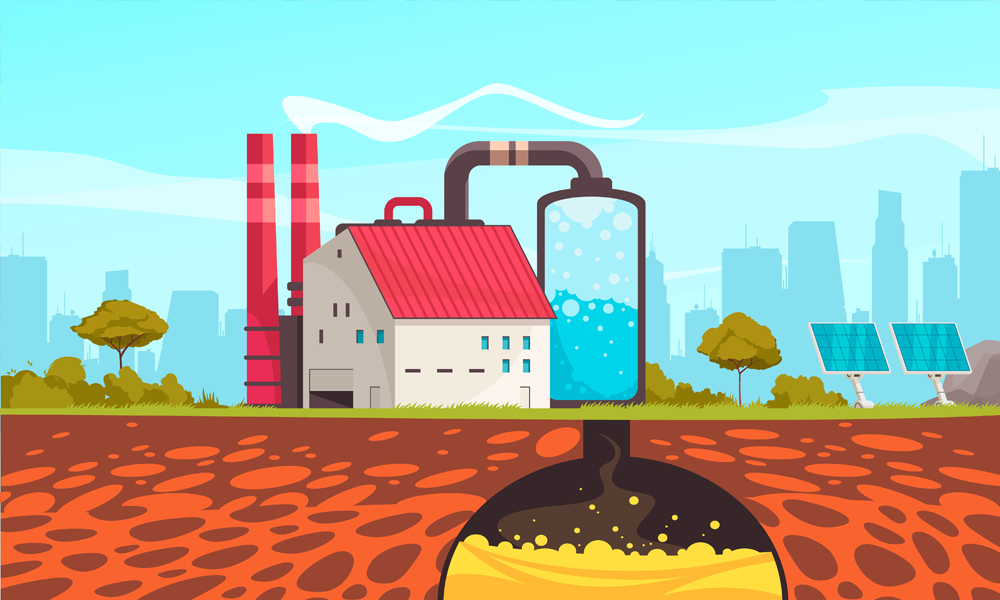
CO2 capture and storage (CCS) is the technology aimed at capturing carbon dioxide emitted from industrial and energy-related sources before it enters the atmosphere, compressing it, and injecting it deep underground in secure geological formations, and ensuring it remains stored there indefinitely. This technique of CO2 removal is a way of slowing our CO2 release into the atmosphere, and is a cost-effective alternative to developing CO2 free-energy production. CCS is to be thought as a short term bandaid to the carbon emissions issue, buying humanity precious time to develop the proper technology to reduce/eliminate our CO2 emissions. The Intergovernmental Panel on Climate Change (IPCC)has predicted that that global CO2 emissions must be cut by 50-80% by 2050, if we want to avoid the most damaging effects of climate change.
CCS has four main components to its success; site selection, capture, transport, and storage of CO2. Site selection begins where the problem has stemmed from, oil beds; from decades of drilling oil out of seafloors, industry has become very efficient at mapping and analyzing the topography of these oil reservoirs. CCS sites need to be sealed spaces so that no CO2 can be released once it is stored, and deep enough for permanent storage, usually more than 800 meters deep. The world’s first CCS site, Sleipner A, is an old natural gas field offshore Norway in the North Sea that stores about 1 million tonnes of CO2 a year; but to put that into perspective, globally we would need about 10,000 sites like this keep up with the current CO2 emission produced. This is why CCS projects are to be thought of as buying time, not permanent solutions to our emissions issue.
Capture of CO2 comes in three main varieties, and has been around for decades being sold to manufacturers like soft drink producers; however CCS requires a scale that is much larger than commercial CO2 production. The post-combustion capture process is where CO2 is produced in its regular fashion from a fuel source, removed from air using organic solvents, then reheated and compressed into CO2 gas. Pre-combustion capture is a technique that uses steam and O2 to convert fuel into mainly hydrogen and CO2 where the CO2 is captured by solvents or a solid adsorbent and then compressed into a compact form. Because the conversion step is already under high pressure, this technique is more energy efficient however the process of converting fuel into hydrogen and CO2 is very complicated, making retrofitting power plants to be costly. The last capture technique is Oxyfiring, burns fuel in pure O2 gas making the products almost entirely CO2 and water vapor. By cooling the exhaust, water vapor readily condenses and CO2 can be easily removed. Oxyfiring captures over 98% of CO2 emissions making it the most effective capture process available however the energy penalty is quite high when processing and handling pure oxygen.
Transport and storage of CO2 occur by compressing the gas down to a liquid, reducing its volume by 99% and pumping it to the storage location just like any other pipeline liquid. The near-liquid CO2 is then pumped deep into the earth, at least 800 m below the surface, into porous geological formations. The sites are selected for high porosity rock (lots of void space), and high permeability (CO2 can easily flow into the rock) that are overlaid with a “cap rock” that effectively seals in the CO2 in.
From predictions Carbon Capture and Storage Association, without any CCS project development, the earth’s temperature will rise 6 oC by 2050, but with expanding CCS projects, they can reduce that to only 2 oC, making a huge impact on the overall degradation of our atmosphere. CCS projects will be the bridge from short-term emissions solutions to a long term, emissions free power production in the future; but we need ensure that the damage occurring right now does not change our future to an unrecoverable path.
Sources for further research:
https://www.epa.gov/climatechange/ccs/
